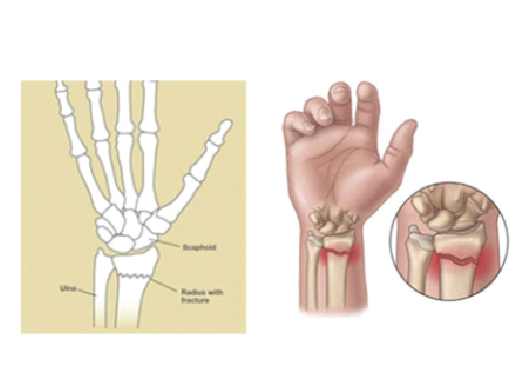
Ways of managing broken wrist
A vital aspect of therapy for a broken wrist is adequate periods of rest from activities which induces pain or severe discomfort. Hence, activities which place a great deal of pressure or stress on the wrist are avoided.
Advertisement
For example activities which involve lifting or pushing objects.
Rehabilitation is geared towards returning to functional activities while preventing complications to the wrist.
Your healed wrist should be strong enough for you to perform the activities you were used to and therefore, allowing your injured wrist to rest adequately ensures that it heals properly without further damage to it.
Once your wrist joint is healed, your physiotherapist will develop a therapy plan based on your goals to improve the state of your muscles.
It’s important to perform exercises which maintain the stretch in appropriate muscles and strengthen weak muscles.
Restoration of the flexibility in your wrist is essential to increase the movement in the wrist and ultimately help you to perform your functional activities.
Management of a broken wrist also involves ensuring the proper alignment of the broken bone(s) as this promotes your ability to return to your functional activities
Consequently, the aims of therapy include:
• Improving strength and flexibility
• Limiting complications as the bone heals
• Protecting the area from further damage.
Therapeutic exercises
Exercises are designed based on the nature of your injury and the functional ability available in the affected wrist. These include the following;
Wrist bends
You may perform this exercise by placing your forearm on a table or arm rest while your fingers and your injured wrist are over the edge of the table or arm rest.
Gently bring your hand downwards towards the floor, to the limit to which you can tolerate and maintain the position for 10- 15 seconds and gently move your hand upwards towards the ceiling to the limit which you can tolerate. Hold the position briefly and relax.
You may repeat this exercise as often as you can throughout the day. You may also perform this exercise with your arm submerged in tepid water. You will realise that it’s much easier to perform movements in the water.
As your movement progresses, then you may perform the exercise on a table or arm rest. You may notice a mild stretch as you move your hand downwards or upwards.
The stretch may be mildly uncomfortable but should not be painful. You may repeat the exercises only when it’s not painful.
Forearm movements
To perform this exercise you need to place your forearm and your fingers on a table. Gently move your arm so that your palm faces down the table or to the point you can tolerate and hold the position for 10-15 seconds and relax.
Gently move your arm again so that your palm faces upwards or to the level to which you can tolerate. You may repeat this exercise throughout the day as long as it does not cause you pain.
This exercise involves the bending of the wrist sideways. Place your arm and fingers on a table or arm rest and gently move your hand to the left side of your wrist.
Try to maintain this position for 10 – 15 seconds and then move your hand back to the middle to relax.
Move your hand again, this time to the right side of the wrist, to the level you can tolerate and maintain the position briefly for 10-15 seconds and relax.
You may also perform this exercise with your arm submerged in water and as it becomes easier for you to move your arm, and then you may perform it on a table or on an arm rest.
Remember to repeat this exercise throughout the day and you should not experience pain as you perform this exercise.
Gripping exercises
This exercise focuses on strengthening your arm muscles so that you may be able to hold objects. The arm muscles usually become weak due to disuse and periods of rest of the wrist joint.
Obtain a circular or rectangular object which is big enough to hold in your injured hand. Squeeze the object for a second and relax.
You may also squeeze and maintain the squeeze for five -10 seconds and relax. Repeat the exercise throughout the day and make sure that it does not cause you pain.
Finger exercises
Place your hand flat on a table, gently lift one finger off the table and try to maintain the position for five seconds and return your finger to the table.
Lift the other fingers off the table one at a time and maintain the position. Repeat the exercise as often as you can throughout the day.




